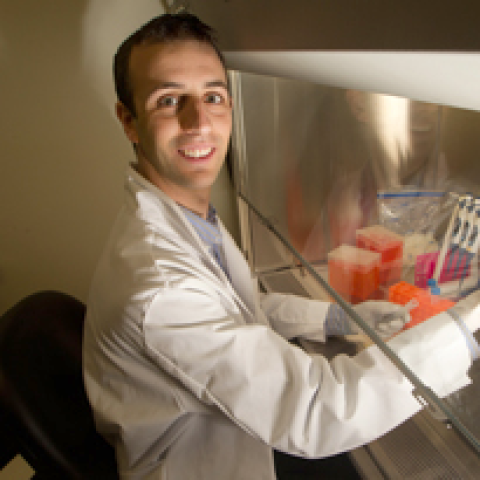Interdisciplinary Initiatives Program Round 6 - 2012
Adam de la Zerda, Structural Biology
Mark Blumenkranz, Ophthalmology
Age-related macular degeneration (AMD) is a leading cause of blindness in the western world. However, our basic understanding of the disease as well as our ability to diagnose it are poor. Current diagnosis of AMD is based on imaging technologies that show the structure of the retina and search for “bumps” in it, called drusen. However, these drusen are merely the end-result of many molecular processes that occur during AMD. Hence, truly understanding what leads to the formation of these drusen and how they lead to vision loss requires visualizing the molecular processes that created these drusen. Such understanding will further shed light on new disease biomarkers and new potential drug targets against AMD. Finally, the ability to molecularly characterize drusen will allow to better monitor patients undergoing treatment, and to tailor the treatment regimen to their individual needs. Currently, no imaging technology allows such capabilities. In this grant proposal, we outline a new imaging technology that in a non-invasive way, can visualize molecular processes in the eye. Through injecting an imaging agent to the veins of a subject, the agent is binding to its molecular target and illuminating an imaging signal, indicating its location. We will build a special laser camera that can detect this signal and produce a three-dimensional image of the retina and indicate where this agent has bound. We will demonstrate this imaging technology by visualizing amyloid beta, an important marker for AMD, in living mice eyes affected by AMD. We will then follow the build-up of amyloid beta as AMD progresses in mice retinas. Watching and characterizing this build-up would be a significant milestone in AMD research that can lead to new understandings on the disease. Importantly, this imaging technology can be extended in the future to visualize other bio-molecules associated with AMD, and even be applied to visualize molecular processes in diseases outside the eye, including cancer and neurological diseases.



